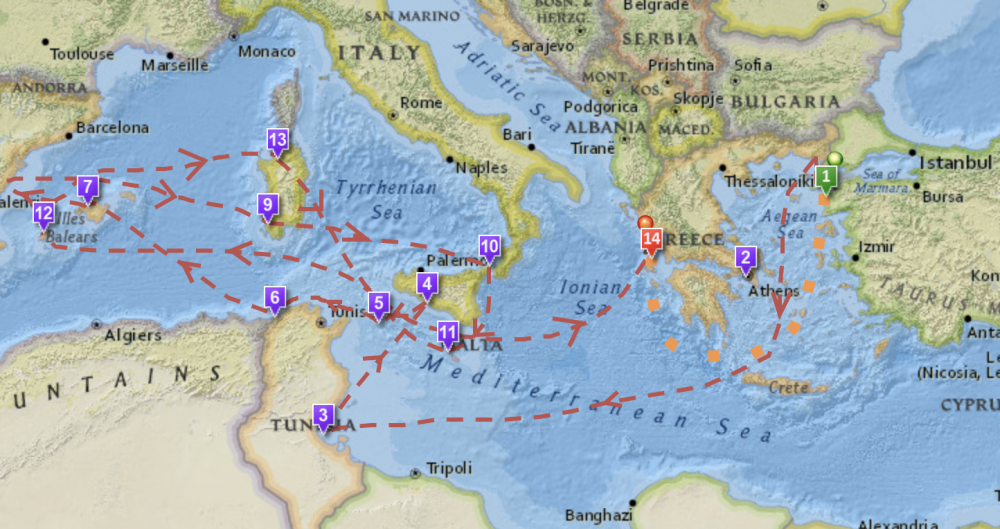
The Odyssey, one of Homer's two great epics, narrates Odysseus' long, strange trip home after the Trojan war. During their ten-year journey, Odysseus and his men had to overcome divine and natural forces, from battering storms and winds to difficult encounters with the Cyclops Polyphemus, the cannibalistic Laestrygones, the witch-goddess Circe and the rest. And they took a most circuitous route, bouncing all over the Mediterranean, moving first down to Crete and Tunisia. Next over to Sicily, then off toward Spain, and back to Greece again.
If you're looking for an easy way to visualize all of the twists and turns in The Odyssey, then we'd recommend spending some time with the interactive map created by Gisèle Mounzer. "Odysseus' Journey" breaks down Odysseus' voyage into 14 key scenes and locates them on a modern map designed by Esri, a company that creates GIS mapping software.
Meanwhile, if you're interested in the whole concept of ancient travel, we'd suggest revisiting one of our previous posts: Play Caesar: Travel Ancient Rome with Stanford’s Interactive Map. It tells you all about ORBIS, a geospatial network model, that lets you simulate journeys in Ancient Roman. You pick the points of origin and destination for a trip, and ORBIS will reconstruct the duration and financial cost of making the ancient journey.
Would you like to support the mission of Open Culture? Please consider making a donation to our site. It's hard to rely 100% on ads, and your contributions will help us continue providing the best free cultural and educational materials to learners everywhere.
Also consider following Open Culture on Facebook and Twitter and sharing intelligent media with your friends. Or sign up for our daily email and get a daily dose of Open Culture in your inbox.
Note: An earlier version of this post appeared on our site in December, 2013.
Related Content:
Hear Homer’s Iliad Read in the Original Ancient Greek
What Ancient Greek Music Sounded Like: Hear a Reconstruction That is ‘100% Accurate’
Discover the “Brazen Bull,” the Ancient Greek Torture Machine That Doubled as a Musical Instrument
Learning Ancient History for Free
An Interactive Map of Odysseus’ 10-Year Journey in Homer’s Odyssey is a post from: Open Culture. Follow us on Facebook, Twitter, and Google Plus, or get our Daily Email. And don't miss our big collections of Free Online Courses, Free Online Movies, Free eBooks, Free Audio Books, Free Foreign Language Lessons, and MOOCs.
from Open Culture http://bit.ly/2IDCkxU
via Ilumina
Comments
Post a Comment